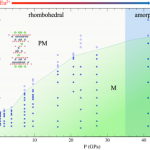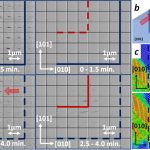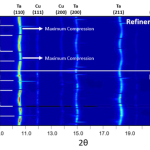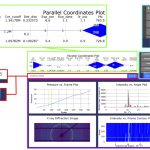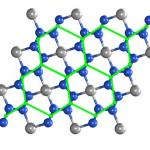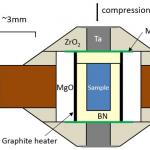Magnetic topological systems promise great potential applications in future dissipationless electronics due to their interplay of magnetism and topological quantum states. Since the discovery of the first intrinsic topological magnet MnBi2Te4, much effort has been placed in a series of Eu-based compounds for the rich phases such as strong local moment, valence fluctuation, and Kondo physics. A recently published work investigated the pressure tuning of magnetism, valence, crystal lattice, and topological state in a topological magnet EuSn2P2 under high… more
Astronomers have discovered thousands of planets orbiting other stars. Many of these planets are rocky like Earth, but considerably bigger. Researchers wonder if these “Super Earths” could support life. One of the requirements for life as we know it is plate tectonics, the slow churning of a planet’s interior that renews the surface, regulates the carbon cycle, and keeps liquid water available. Now, researchers have used the U.S. Department of Energy's Advanced Photon Source (APS) to understand how common silicate minerals would behave under the incredible pressures… more
A recently published work that combines molecular dynamics simulations, crystallographic theory generalized for strained crystals, and in-situ real-time Laue x-ray diffraction, reveals unprecedented nanostructure evolution during pressure-induced Si-I→Si-II phase transformation. The research effort was led by a long-time HPCAT user Professor V. Levitas, (Anson Marston Distinguished Professor in Engineering/Vance Coffman Faculty Chair Professor in Aerospace Engineering at ISU and staff member at Ames National Laboratory) and his former Ph.D. student Hao Chen (now a… more
A recent study published in the Journal of Applied Physics reports on the determination of the yield strength of tantalum to multi-megabar pressures. The work was a collaborative effort, led by student Christopher Perreault from UAB Professor Yogesh Vohra's SSAA partner group, with contributions from Lowell Miyagi and Sam Couper from the University of Utah CDAC partner group, and Larissa Huston, a postdoc from LANL in Blake Sturtevant's Tri-Lab partner group. A primary contribution of this work was the cross-validation of two independent methods for… more
The magma ocean stage in planetary formation is where most or all of a planetary body is molten, allowing for the separation of minerals and ultimately the formation of the silicate mantle as it cools. Physical properties of the silicate melt, such as viscosity, control the crystallization process where less viscous liquids allow for more separation of minerals into distinct compositional layers within the magma body. In order to understand the compositionally diverse surface of Mercury, the resulting interior structure formed from the magma ocean stage needed to be… more
Scientists from LANL’s Applied Computer Science and Shock & Detonation Physics Groups recently developed Cinema:Snap, a software tool designed for the management and visualization of very large high-pressure X-ray diffraction datasets. Developed specifically for high compression rate dynamic diamond anvil cell (d-DAC) experiments, Cinema:Snap allows a user to visualize both raw (2D images, integrated spectra, etc.) and processed (pressure vs. frame, contour plots, etc.) data from an entire compression through a variety of user-defined views. A… more
An international group of researchers which includes collaborators from Universität Bayreuth (Germany), Linköping University (Sweden), Radboud University (Netherlands), National University of Science and Technology (Russia), Wuhan University (China), and Carnegie Institution for Science (Washington, DC) using synchrotron facilities at DESY (Hamburg), GSECARS (APS), and HPCAT (APS), recently reported the discovery of a novel 2D material – Beryllonitrene (BeN4), that was synthesized at high pressure – high temperature conditions. Unlike graphene, which is a… more
High-entropy materials containing a mixture of five or more elemental species represent a paradigm shift in materials science where a variety of oxides, carbides, and borides can be synthesized with superior physical and mechanical properties compared with those accessible from the constituent materials. In an endeavor to create ultrahard and high-temperature materials that retain their physical properties under extreme conditions, high entropy alloys have drawn considerable attention in recent years. In this context, high-entropy borides (HEB) are of particular interest… more

